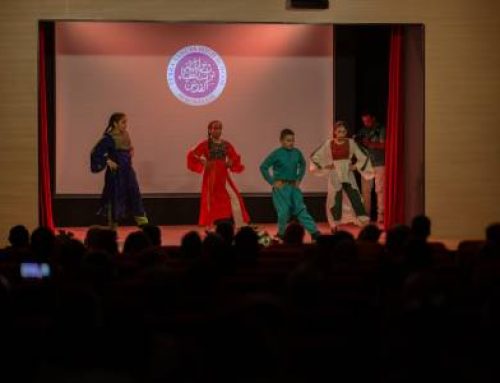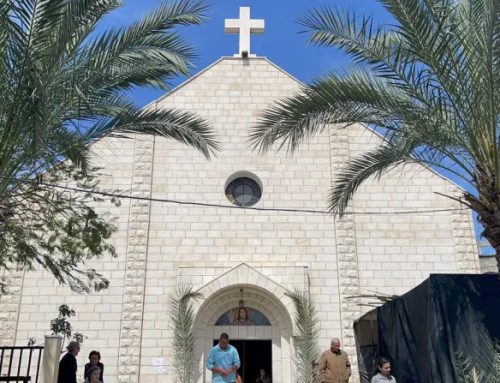ANKARA, Turkey – On July 10, 2020, a Turkish court ruled the reconverting of the current status of Hagia Sophia as a museum into a mosque, after deciding that the decree of Gazi Mustafa Kemal Atatürk, modern Turkey’s founder, to convert it into a museum in 1934 was illegal. As everywhere around the world, reactions in the Holy Land were varied, from condemnations to congratulations.
The Hagia Sophia structure was built in its current form by Emperor Justinian I in 532. The cathedral, which was built in six years, is the third church with the same name that was built on the same site. After standing as a cathedral for 930 years, it was converted into a mosque after the fall of the Byzantine Empire and the conquest of Constantinople in 1453 by Mehmed II, sultan of the Ottoman Empire. Muslim prayers continued to be held in the structure until 1931, after which it was closed for 4 years. In 1934, modern Turkey’s first president Gazi Mustafa Kemal Atatürk issued a decree to transform the building into a museum, a decision that took effect the following year.
Reactions from the Holy Land
The first calls by the Turkish government to change the status of Hagia Sophia prompted many Christian leaders in the Holy Land to voice their concern. On June 24, Patriarch Theophilos III of the Greek Orthodox Patriarchate of Jerusalem issued a statement in which he tried to reason with the Turkish government, reminding it of Turkey’s credit of maintaining neutrality over the site for nearly 100 years. Drawing on the Holy Land’s 2000-year history of Abrahamic faiths existence, he said that “accessibility promotes peace and mutual respect, whereas attitudes of exclusivity promote conflict and bitterness”.
Recently, when asked about the decision by the Don Bosco youth, Archbishop Pierbattista Pizzaballa, Apostolic Administrator of the Latin Patriarchate, said that the ruling “reopens wounds in the relations between Christians and Muslims,” as Hagia Sophia Cathedral is a symbol not only for the Orthodox Church but for all Christians.
“We should avoid entering into an attitude of anger towards Muslims,” he continued. “Just like Al-Azhar protested the decision, we can do the same. We have to be firm in our attitude with our Muslim brothers and friends.”
In East Jerusalem, a group named the “Jerusalem Initiative”, which includes 9 Christians and Jews protested in front of the Turkish Consulate by burning a Turkish flag and hanging banners in Arabic, English and Hebrew which read “Wake up!! the Christians are being persecuted daily… Save Christianity.”
However, the decision of the Turkish court was welcomed by Hamas calling it “a proud moment for all Muslims”, while condemning all at once the “sadness and weeping” of some Arab official circles towards the ruling. The decision was also well received by Sheikh ‘Ekrima Sa’id Sabri, the preacher of the Al-Aqsa Mosque and former Grand Mufti of Jerusalem, who conveyed his congratulations to Turkish president Recep Tayyip Erdogan.
Future of Christian mosaics and icons?
The structure will officially start holding Muslim prayers on July 24, after 85 years of being a museum. Turkey’s AK party spokesman Omer Celik said that Christian icons and mosaics will be covered by curtains and laser lights will be pointed at the figures’ faces at the time of the prayers.
According to Ibrahim Kalin, the spokesperson for the Turkish presidency, Christian icons will remain “untouched” and “preserved” and the structure will continue to receive visitors in this “place of worship and cultural site… that will be open for everyone for visiting, thinking, contemplation and prayers.”
The Deësis in Hagia Sophia
The Deësis is one of the most known and recognizable mosaics in Hagia Sophia. The mosaic represents the mediatorship of St. John the Baptist on the left side of Christ the Pantocrator and the Mother of God on his right. Both are imploring Jesus for the forgiveness of sins. St. John the Baptist is characterized by the inscription as “Prodromos” which means the precursor. Thomas Whittemore, the archaeologist who discovered the mosaic, believed that the Deësis might go back to the early twelfth century for two reasons: the form of the letters of the inscription and the similarity of the Mother of God with the Mother of God of the Vladimir icon.
When viewers stand in front of this work of art, they can see the humility that St. John the Baptist reflects through his facial expressions; the humility of a mediator who knows sorrow in the world and the sinfulness of man.






